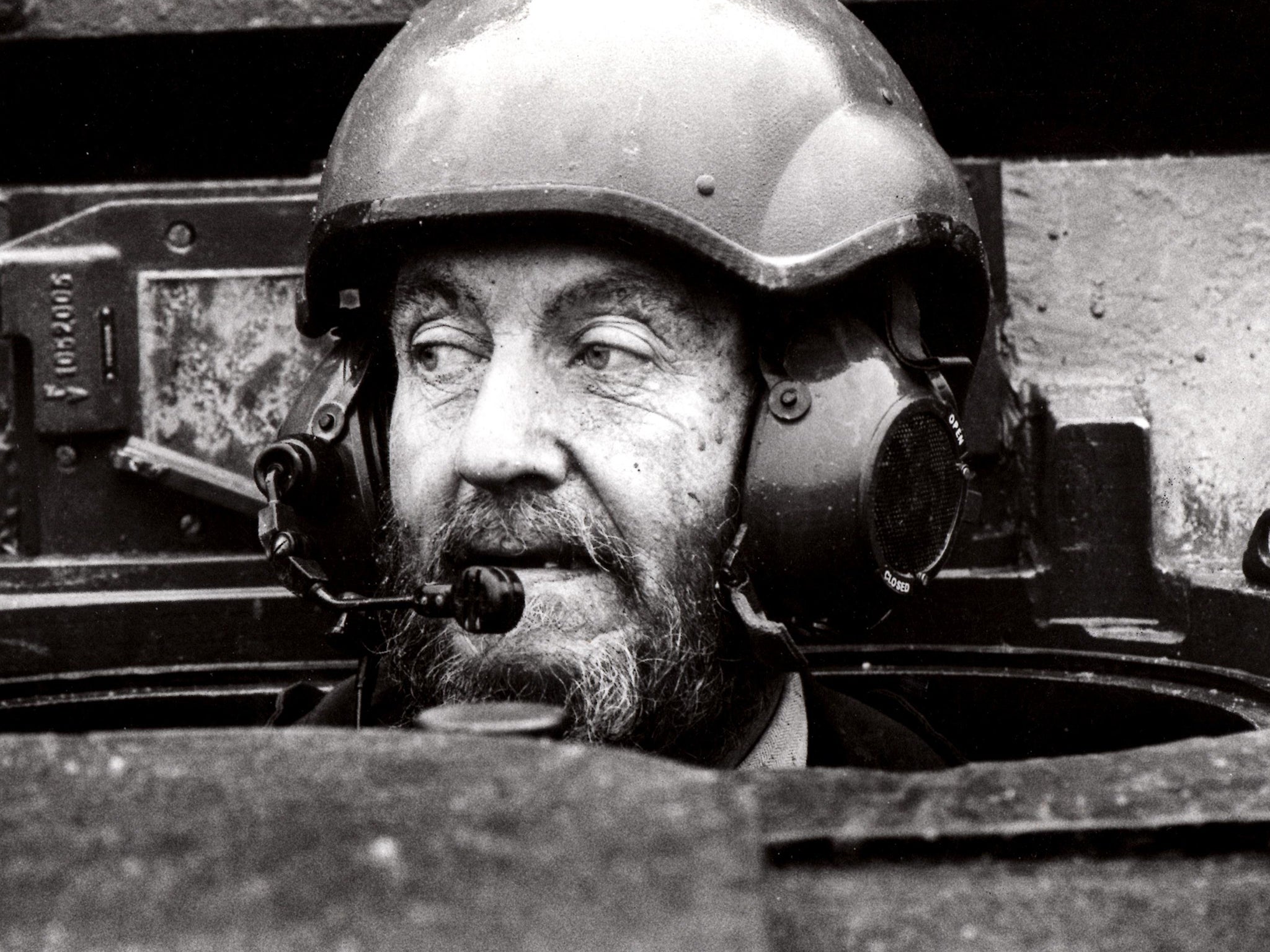In early October 1986 a new broadsheet newspaper called The Independent was launched in Britain, and Denis Bishop became its first in-house illustrator.
An extraordinarily versatile and flexible illustrator, he had extensive hands-on experience gained from working as creative head of several advertising agencies. He had the knack of being able to turn his hand to any number of styles or subjects. A representative selection might include the large-scale mural of Florence Nightingale for the Thameside Festival of Britain; botanical illustrations of vegetables or a spray of rhododendron blossom; architectural studies, such as the London Apprentice pub at Isleworth Ait; exploded-view drawings of vehicles; and maps for the author Len Deighton.
Denis Bishop was born in Teddington in 1928, the only child of Margaret (née Baillie) and William Bishop. The family held a Royal Warrant for operating swingboats – the large boat-shaped swings – in several parks. One of them, Bushy Park, by Hampton Court Palace, loomed large in his early years. “Bushy Park was like a second home to me,” he told me. The family also had a marquee concession, though they only exercised this option in Petersham Park – next to Richmond Park. They also ran a sweet shop called the Triangle at Teddington Bridge.
He left school aged 14 and joined the Art School at Twickenham Technical College before doing national service between 1946 and 1948. He trained as a tank driver – sitting at the wheel of Comets, Cromwells and American Stuarts – and was posted to India. On the day he died, there was an illustration of a Cromwell on his table.
We became neighbours in 2000 and we would compare the Punjab then and now. He was posted to the cantonment – the military quarters – in Jalandhar. He used to watch vultures ride the air currents from the foothills of the Himalayas and past Jalandhar – something which is impossible now, as the air is too polluted.
Punjab was a shaping experience for him. His detachment would drive out in light Honey tanks as soon as the police or army suspected trouble between rival religious factions. On one mission, the crew heard the sickening sound of wood snapping beneath their Honey as they crossed a timber road bridge. Bishop drove the tank across with the bridge collapsing behind them. Looking back at the space where the bridge had been, the tank’s commander ordered full speed to their destination. When his regiment was decommissioned, they handed their tanks to the Indian Army’s Poona Horse.
Back home in Blighty, he and his comrades were given the “jolly” of mine clearance using flail Shermans, one of the so-called “funnies”. It had a forward drum of weighted whirling chains ahead of the vehicle to explode mines.
Bishop’s passion was more or less for anything with wheels, wings or hulls. For one Independent article he reported on how a variety of vehicles handled. Pre-Jeremy Clarkson, he drove a Challenger tank, a brewer’s dray and a fire engine, though he grumbled that he was robbed of his moment to drive a 125 diesel locomotive. While with this paper he fine-tuned portraiture, creating deft, economical portraits of Francis Bacon, Collette, his friend Trevor Cox (more familiar as the author William Trevor), Taylor and Burton, Christopher Isherwood and many more.
He worked on Len Deighton’s Bloods, Tears and Folly: In the Darkest Hour of the Second World War (1993) (retitled Blood, Tears and Folly: An Objective Look at World War II in the USA) as an illustrator and map drawer. During the course of writing the book, he recalled Deighton asking him about what it was actually like in a tank. Bishop put it down in a letter, describing, for example, the “steel-squeal” of the tracks. Its contents, he smiled, appeared almost verbatim. “I didn’t mind,” he told me in his typically unflappable fashion. “I was being paid for the job.”
He traded paintings with the now US-based painter Ken Maronie. One prize exchange was a one-off book of black line, brown line and watercolour illustrations of military engines for a Bedford QL truck. Its army camouflage was over-painted in RAF livery for its appearance in the 1969 film Battle of Britain. On the third occasion it was stolen in the late 1980s, he never got it back.
Bishop was also involved in a variety of three-dimensional design projects, ranging from a double egg cup (in the V&A Museum) to cloak-and-dagger “helicopter stuff” for Westland (supposedly for Indira Gandhi). Another design came about after getting frustrated by tree roots and the uselessness of horticultural tools available to grub up roots. This prototype “digsaw” enabled the user to rip through tree roots. Refined and improved, it failed to go into mass production when, around 1998, he learnt too late that the Czech and Russian financial backers were running a money-laundering scam. As a consequence, the company went down the drain and the Bishops lost their house.
He is survived by his wife, Dawn, their children, Belle and Simon, and two grandchildren.
William Denis Bishop, illustrator, designer and inventor: born Teddington, Surrey 28 January 1928; married 1951 Dawn Lewis (one daughter, one son); died London 13 March 2015.
Subscribe to Independent Premium to bookmark this article
Want to bookmark your favourite articles and stories to read or reference later? Start your Independent Premium subscription today.


Join our commenting forum
Join thought-provoking conversations, follow other Independent readers and see their replies